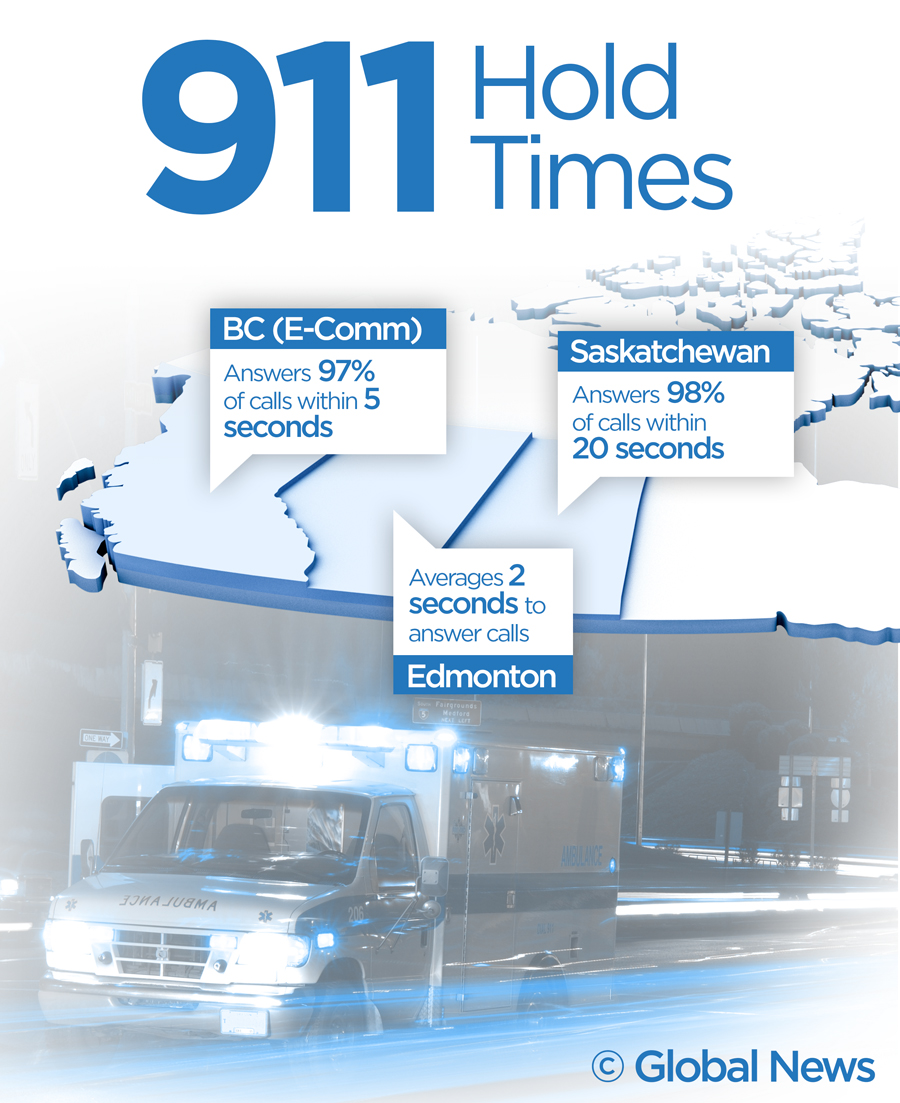REGINA – Saskatchewan’s emergency management system aims to answer at least 95 per cent of 911 calls within 15 seconds.

“If we don’t meet that standard, then that tells us we need to increase staffing,” said Duane McKay, our province’s emergency management commissioner.
The problem is, the province said it doesn’t have the technology to be able to tell whether it’s meeting its own standard.
Instead, they measure how many calls are answered within 20 seconds.
By that standard, they fare well, getting to 98 per cent of calls in that time frame.
When calls aren’t answered immediately, they enter a queue, where they wait to be answered.
Each year, around 12,000 calls coming in to 911 enter that queue, where they hear a recorded message asking them to remain on the line – regardless of their emergency.
We aren’t the only province to do this, but our standard is far lower than other 911 jurisdictions.
In British Columbia, a private company called E-Comm handles the majority of 911 calls.
They also employ the queue system, but they also answer more calls, more rapidly. In 2015 they’re on pace to field 1.25 million calls.
“We’re required to answer 95 per cent of 911 calls in 5 seconds or less,” said spokesperson Jody Robertson.
E-Comm often exceeds that, answering 97 per cent of all calls in that time span.
They use a formula to determine how many call-takers they need on a daily basis.
“We know Friday and Saturday nights, special event nights, holidays are busier than your average Tuesday, we staff up accordingly,” said Robertson.
In general, E-Comm has at least five people working, but with cross-trained staff, they can quickly have 25 people answering the phones.
In Alberta, Edmonton recently increased its minimum 911 staffing levels based on demand.
“We found it unacceptable that people could be waiting up to 45 seconds to talk to a 911 operator,” explained Inspector Erik Johnson of the Edmonton Police Service.
They doubled their operator minimum, from two people, to four and it made all the difference.
“We are maintaining a standard of answering every 911 call within two seconds,” Johnson said.
Edmonton also cross-trains staff, so in a pinch 19 people can be working the phone lines.
In Saskatchewan, the minimum staffing levels haven’t changed since the 1990’s, though McKay said it’s something they’re always evaluating.
“Are we meeting our standards? Do we need more? What’s the changing environment. The system has the funds to do whatever it needs to do,” he said. “If we need them, we’ll hire them.”
On Thursday, Global News will release the final part of the “911 On Hold” series, evaluating the needs of a growing population, making more 911 calls.


Comments